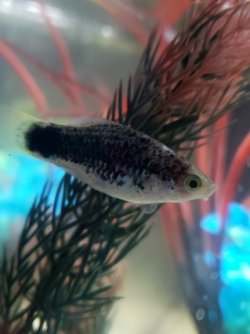CatLover2021
New Member
I recently bought my very first platy fish, and the person at the pet store said there's always a possibility of them being pregnant so I've been searching for someone to tell me whether she is or she is not. I've already looked at gravid spots and all that mess on the internet and I cant tell. I've noticed these things:
1. She likes being by herself
2. She spits out the food
3. (Noticed today) She's staying in a corner at the top of the tank away from everyone
So can someone give me a straight forward answer to this? Is she pregnant? Is she sick? If she is pregnant, tell me what to do, possible due date, and how to get ready for babies. If she's sick, tell me how to fix it. Please and thank you!
1. She likes being by herself
2. She spits out the food
3. (Noticed today) She's staying in a corner at the top of the tank away from everyone
So can someone give me a straight forward answer to this? Is she pregnant? Is she sick? If she is pregnant, tell me what to do, possible due date, and how to get ready for babies. If she's sick, tell me how to fix it. Please and thank you!



